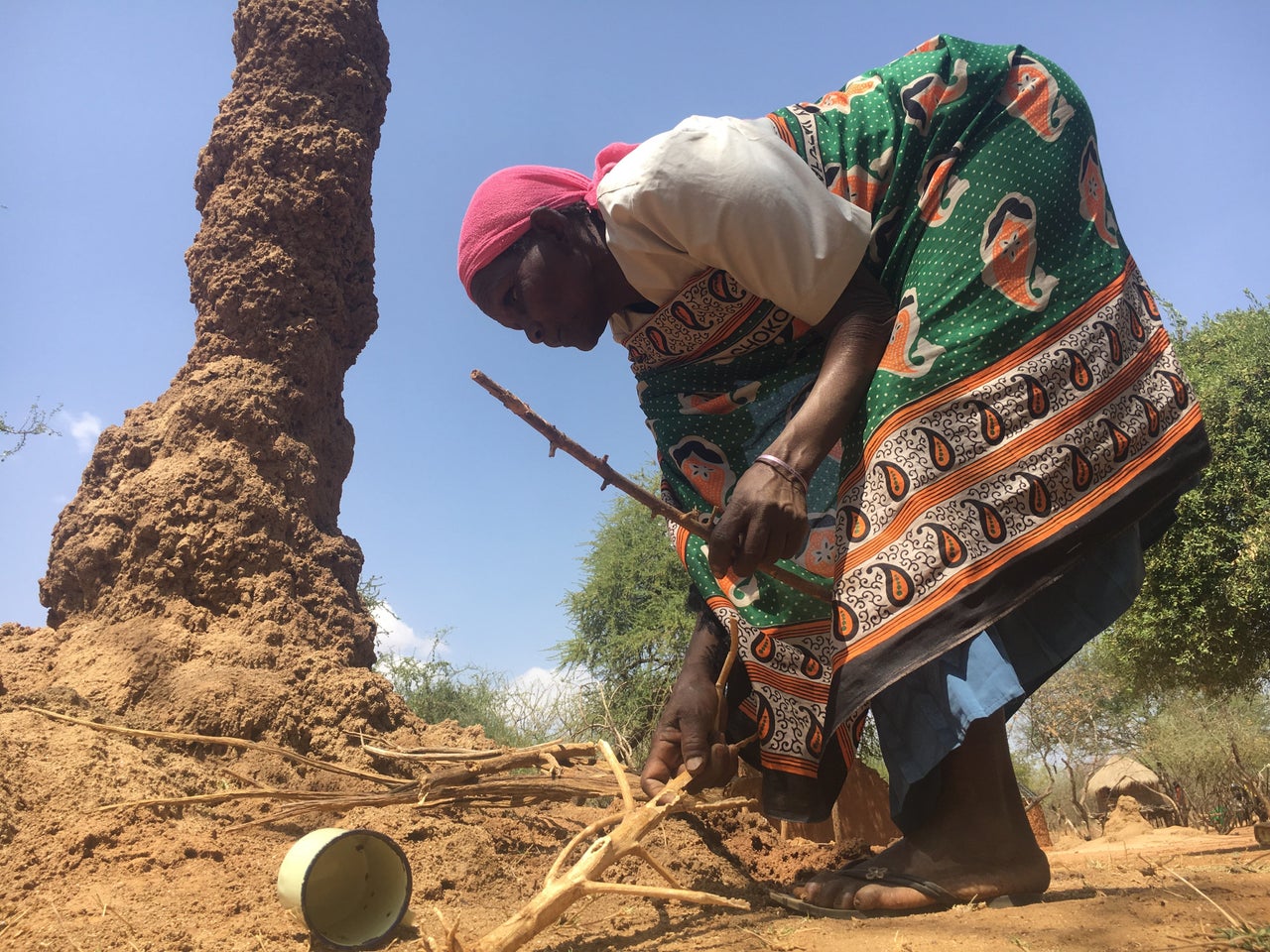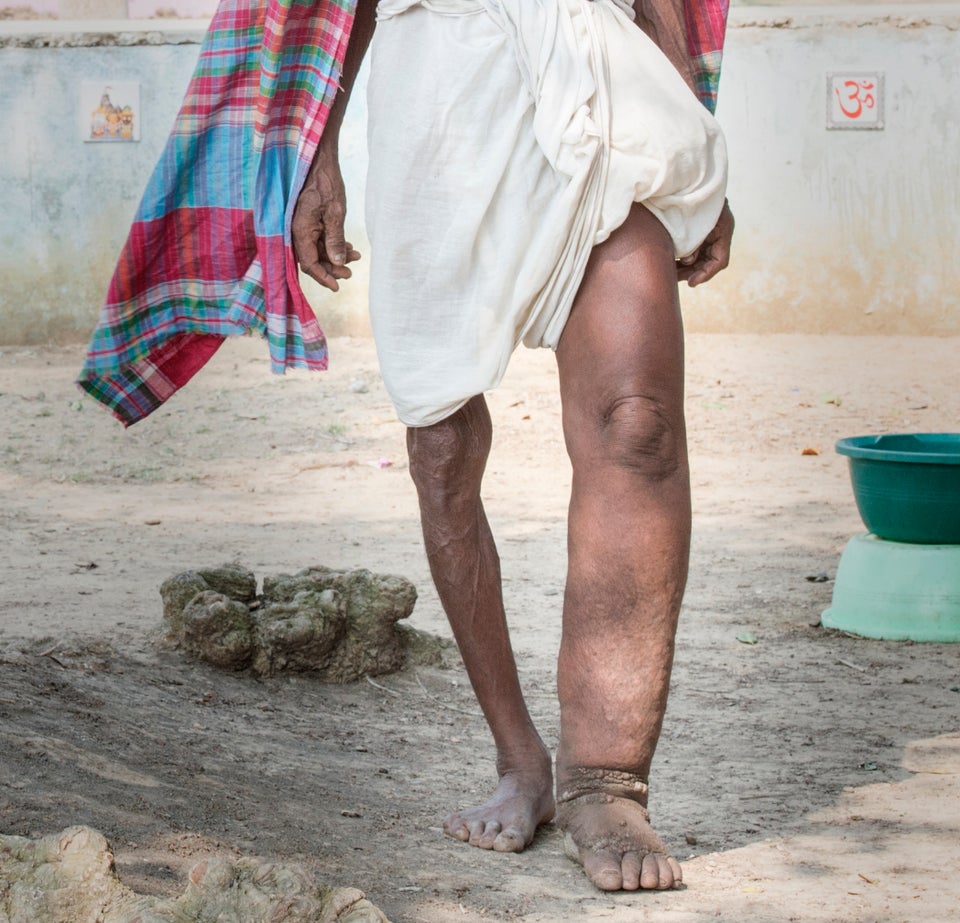This article is part of HuffPost’s Project Zero campaign, a yearlong series on neglected tropical diseases and efforts to fight them.
ASILONG, Kenya ― Before her eye troubles began, Selina Chepserum was a skilled harvester of termites. In the few days after the seasonal rains, she would stand at the bottom of massive termite mounds, catching the insects as they swarmed down the knobbled orange totems, across a stick lattice trap, and into her cup.
Chepserum could haul around 100 pounds of giant termites, stashed in twitching sacks. She would sell the bulk of them to add to her family’s small farming profits and use the rest to make protein-rich dishes that fed them during the dry months in this remote and arid part of northwestern Kenya.
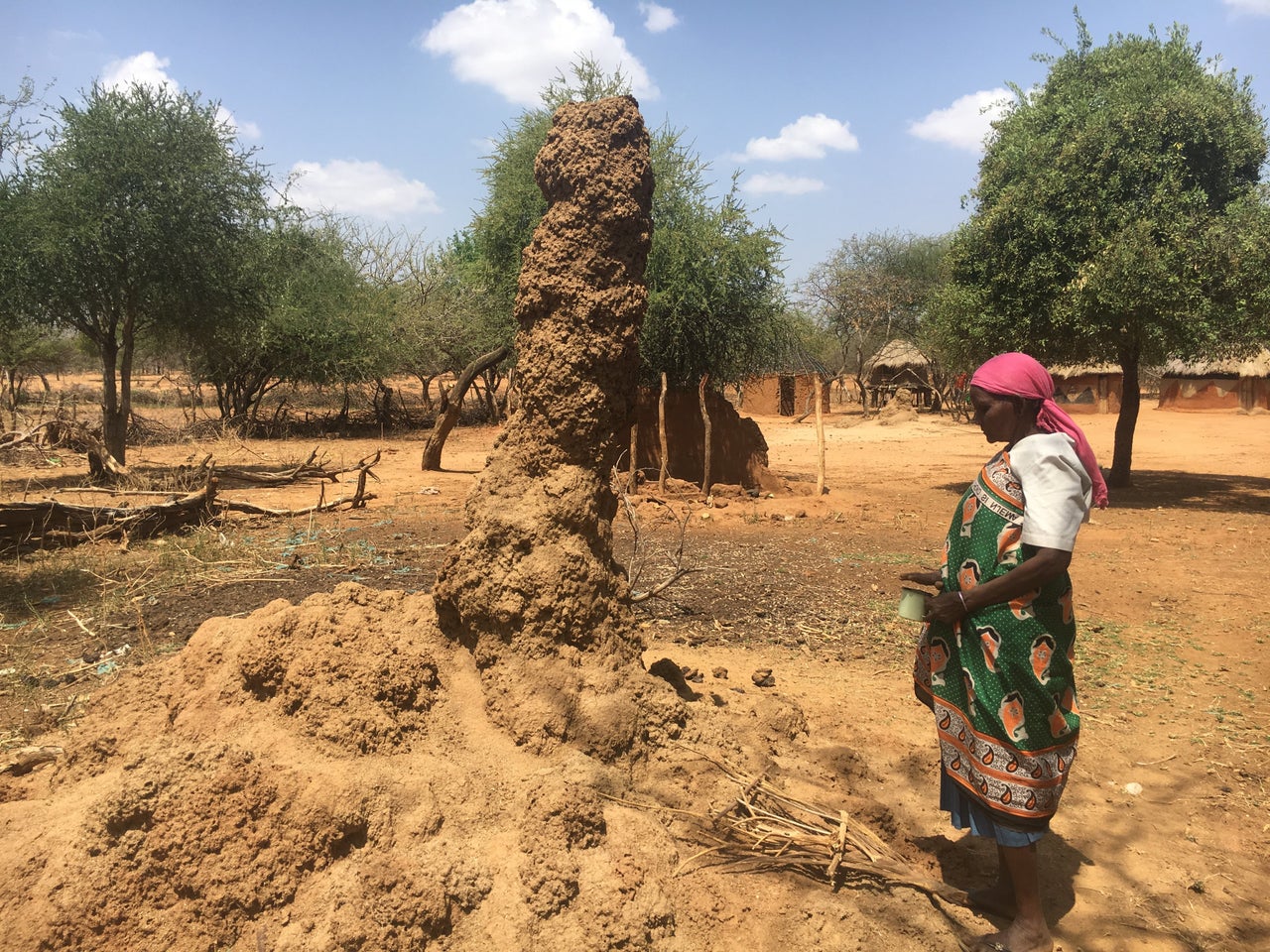
She prepared sugared termites, honeycombed termites, and a kind of salty termite pesto to add to the staple cornmeal, or ugali, dish. Chepserum peddled cups of raw insects for 20 Kenyan shillings (about 20 cents) to people living around her village of Asilong in West Pokot County.
But all this stopped about 10 years ago, when Chepserum’s eyelashes started growing into her eye, causing stabbing pain and destroying her vision as they scraped at her cornea.
“I felt something rubbing against my eye, and when I tried to get it out, I couldn’t,” said Chepserum, who estimates her age to be about 55.
The swelling, weeping and scarring of her eyes got so bad that Chepserum could no longer make out the face of the person sitting next to her, let alone collect bugs from the towering termite mounds dotting her land. She could neither kindle a cooking fire nor tend to her crops, chickens and goats.
“I felt so bad, like there was no need for me to be alive because I couldn’t do the smallest thing for myself,” Chepserum said.
She had contracted trachoma, a bacterial eye infection that blinds one person every 15 minutes. The leading infectious cause of blindness worldwide, trachoma affects over 100 million people in 57 countries. The disease is common in hot, dusty areas that lack clean water and is transmitted by human contact or by flies that pick up the discharge it causes in people’s eyes. Women, who tend to be caregivers and are therefore more at risk of coming into contact with trachoma, are twice as likely to go blind from it.
Africa is particularly blighted by the disease. In Kenya, trachoma is thought to be the second leading cause of blindness after cataracts ― but while cataracts affect mostly older people, trachoma also can strike the relatively young.
Though the disease causes irreversible blindness, it is fully preventable and treatable with antibiotics or, in more severe cases, surgery performed under local anesthetic. In areas like the one where Chepserum lives, however, surgery isn’t always available. Though awareness of the disease is growing, there may not be doctors in remote villages who can tell sufferers how to care for their trachoma.
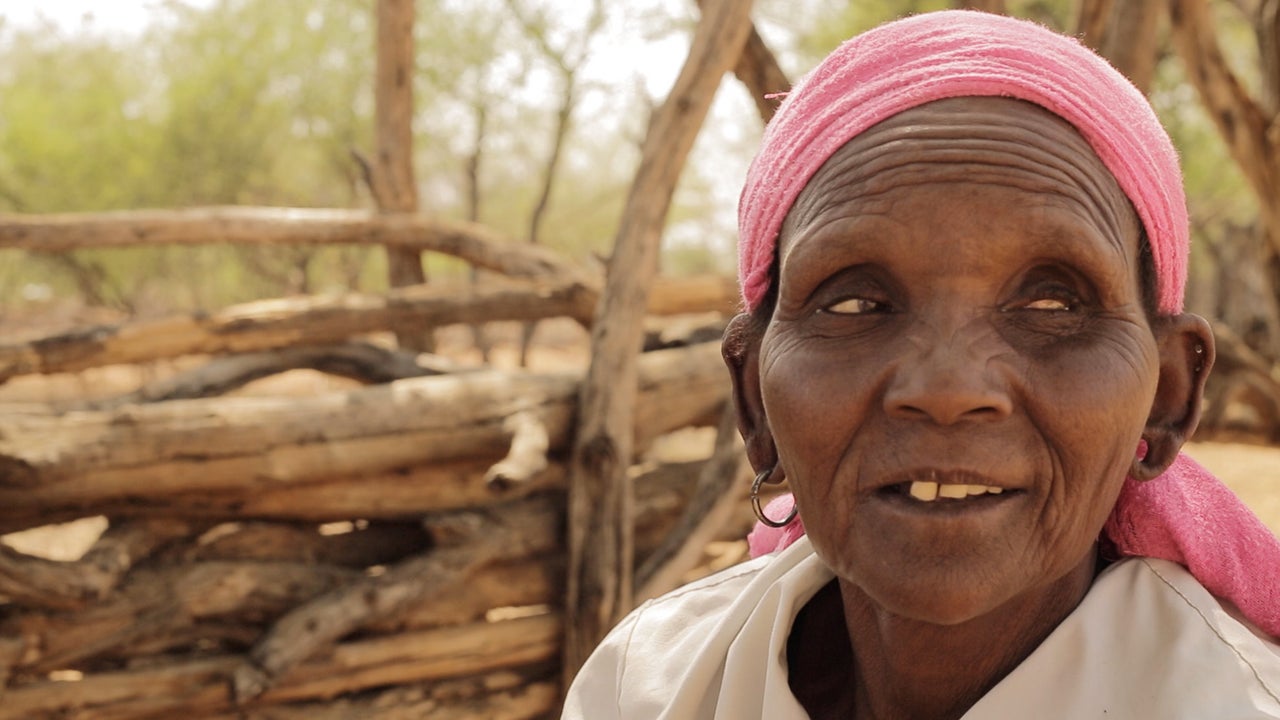
Chepserum, who suffered for years before finding proper treatment, would spend her days waiting for children to come and assist her, or crying out for anyone to yank out her eyelashes and give her some relief from the pain. In the absence of proper medical care, she turned to a controversial folk remedy that involves someone yanking out the affected eyelashes.
When friends and family were not around, Chepserum would pay whoever she could find either 100 shillings (around $1) or a few pounds of corn to extract her eyelashes using their fingers and an ash-coated nail.
“It’s a painful process,” she noted. “They have to make sure that all the hair growing inside my eye comes out. But within a short time, maybe three days or a week, you feel them coming back.”
After a plucking session, Chepserum’s eyes would be full of discharge and so sensitive that she would have to cover her face with a scarf. But at least she could enjoy a brief sense of relief from the stabbing pains she knew would soon return.
Finally, in 2014, she got help from Michael Makari, a doctor from a hospital located an hour’s drive down dusty dirt tracks lined with thorn bushes. Makari roams the poor countryside treating people with trachoma. The Fred Hollows Foundation, an Australian charity, funds this work, allowing him to find patients like Chepserum.
“The bacteria first causes inflammation, and after that the lid will be scarred and turn inward, so the lashes keep scarring the cornea,” Makari explained.
He advised Chepserum to keep her face clean and recommended surgery to stop the damage to her cornea.
To fix the lashes, Makari said, a surgeon flips the affected lid inside out and stitches it in place so the lashes point in the right direction.
The Fred Hollows Foundation pays doctors about $30 a day to perform surgeries on patients. Otherwise, says Makari, sufferers would have to pay about $90 to cover the cost of the surgical tools and a weeklong hospital stay ― a cost that was well out of Chepserum’s budget.
During a recent follow-up, Makari checked Chepserum’s eyes as she sat in the shade of a tree outside her conical hut. He put in some eyedrops before declaring his satisfaction with her recovery and expressing relief that she is no longer having her lashes plucked.
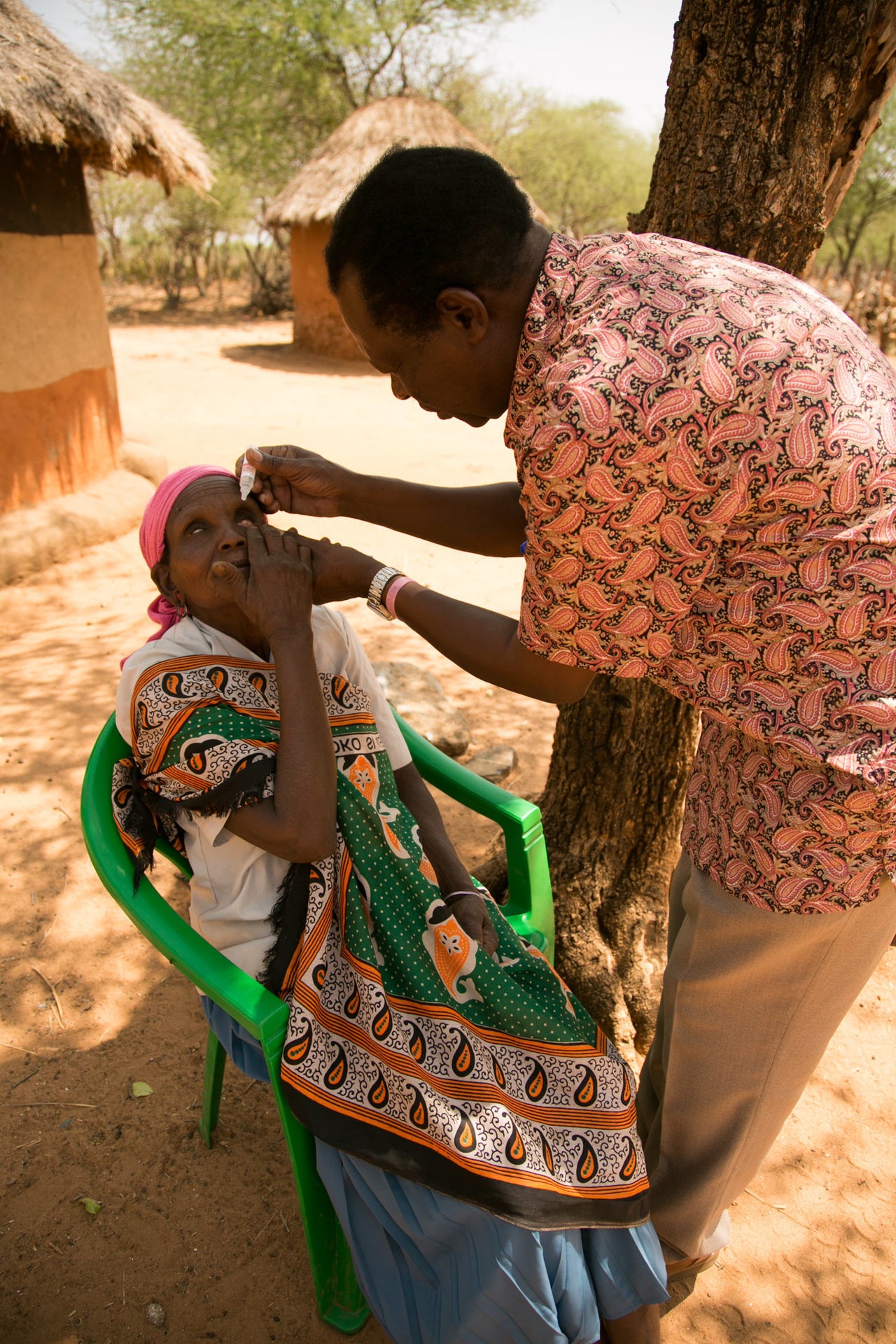
“Sometimes if you walk around, you see the forceps hanging around for pulling the eyelashes,” he said.
Makari added that plucking hairs can worsen the condition, causing inward-growing lashes to eventually turn further inward.
Today, plucking is mostly practiced among older people, and education about treatment for this blinding disease is increasing in Kenya.
Africa overall is taking major steps forward in the fight against trachoma, which is remarkable given that the World Health Organization considers the disease to be severely underfunded and ignored.
Last year, over 200,000 people in 27 African countries received surgery for inward-facing lashes ― that’s 95 percent of the surgeries performed worldwide. In addition, more than 83 million in Africa were treated with antibiotics, accounting for 97 percent of all antibiotic treatments for the disease worldwide, per the WHO.
For Chepserum, the surgery saved one of her eyes, letting her return to her daily routines, for the most part. Her days of harboring a death wish are well behind her.
“The things I am happy about seeing are my children and grandchildren, and seeing how my farm is doing,” she said.
She’s also pleased that she can once again “look for food for the family,” she added, before going to fetch a cup and arranging twigs at the foot of a nearby termite mound to demonstrate how she will make her family protein-rich again.
